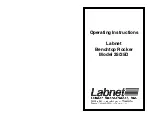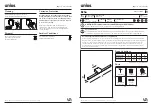
Programming the Structure of the Sequencer
S7-GRAPH for S7-300/400 Programming Sequential Control Systems
C79000-G7076-C526-01
6-7
6.7
Alternative Branch
An alternative branch consists of more than one parallel path (a maximum of 125).
Each path in an alternative branch begins with a transition. Only the branch path
whose transition switches first is executed. An alternative branch therefore
corresponds to an OR operation in which only one path can be active.
Each path in an alternative branch ends with a transition and can be closed by a
branch stop or a jump.
Tn
Tm
T2
T1
T4
T3
T6
Ty
Tx
T7
Jump
T5
1
2
3
➀
:
Alternative sub-branch 1
➁
:
Alternative sub-branch 2
➂
:
Alternative sub-branch 3 with a
further alternative
branch
Tz
Tx+1
Jump
S1
S2
S3
S4
S5
Sm
Sn
Sx
Sy
Sz
T5
Tz
Priorities in Alternative Branches
If more than one transition is satisfied at the beginning of various paths, the priority
is as follows:
The transition furthest to the left has priority 1, in other words the transition located
immediately below the previous step.
The priority of all other paths of the alternative branch is decided by the transition
numbers. In this case, the transition with the lowest number has the highest
priority.
















































